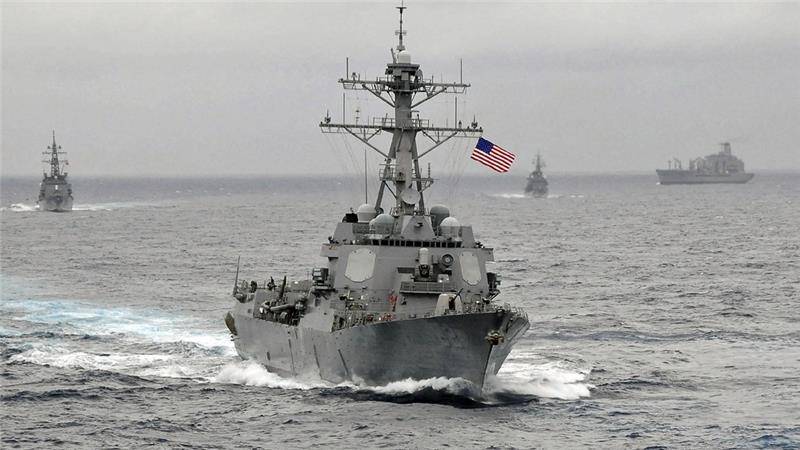The feud between the United States and China is nothing new; it dates back to the mid-twentieth century. But the recently rising maritime dispute over the South China Sea is going to set stage for another tension. China asserts rights over South China Sea while the US considers it res communis and regards it a part of the high sea under the United Nations Law of Seas, and hence not under state control.
On January 23, 2017, the newly installed White House press secretary Sean Spicer spoke over the issue of South China Sea and asserted that “the US is going to make sure that we protect our interests”. Earlier, the US new Secretary of State Tillerson had also spoken in this connection: “They are taking territory or control or declaring control of territories that are not rightfully China’s”. In similar spirit, the Obama administration had also shown identical concerns over it.
The China-US relations underwent three phases to come of age. The period from 1949 to 1969 marked by containment and animosity, the decade of 1970 witnessed rapprochement and establishment of full diplomatic relations from 1979 to onward. Since the establishment of relations in 1970, one aspect persisted as the hallmark: the US insistence on China to improve its human rights record and the China’s rebuff declaring it its internal matter. It stuns a student of international relations that the United States took three long decades to recognise China. Throughout, both countries have been frowning at each other for many a reason. Clouds of confrontation and competition between the two are hovering, and the ‘ifs and buts’ of various issues evolved a trust-deficit environment.
China’s rising influence in Asia is particularly a sore point for the US. The hue and cry over China’s rising sway is owed to economic activities accompanied by political dominance. As economic activity is directly proportionate to geopolitical significance, China enjoys political sway over the region as well. Thus, many countries of Asia are under the influence of China. Examples are abound. China plans to connect the Central Asian States through the mega-project of ‘One Belt, One Road’. The proposed scheme will enable China to play a bigger role in world politics. Importantly, many of these countries have already been engaged at SCO forum.
China-Pakistan Economic Corridor (CPEC) is another glaring example of China’s waxing influence in the region. The project is seen to be a game-changer for Pakistan and China and elevate the Sino-Pak relations to new heights of friendship.
In its ruling in a case filed by the Philippines some three years back, an international tribunal in The Hague, Holland, adjudged that China had violated the Philippines’ sovereign rights in the South China Sea by constructing artificial islands and exploring petroleum and gas reserves. Though the control of the South China Sea is the most explosive diplomatic issue in East Asia, proactive involvement of Washington by siding with Vietnam, Taiwan, Malaysia, Brunei, the Philippines and Japan riles China and up the issue to military dimensions. Manila has welcomed former Second World War enemy Japan to conduct joint military exercises and also former coloniser United States to land fighter jets in the archipelago nation. Earlier, in 1970s and 80s, China and Vietnam used force several times. One wonders why the involved countries hammer out the solution to the conflict without American involvement.
China plainly rejected the ruling. The Chinese president, Xi Jinping, vowed to “resolutely defend” his country’s interests in the region while Chinese foreign minister impressed upon the US that the ruling had infringed on China’s sovereignty.
China has aggrandised its activities in the South China Sea in recent months; it has used dredging ships to pour sand on coral reefs and turn them into islands and has installed missile launchers, runways, barracks and other security facilities.
In his September 8, 2016 speech, the US President Barack Obama while attending the ASEAN summit had warned China that it must observe the arbitration ruling pronounced in July 2016. More importantly, the United States has been launching maritime navigational programmes in the sea.
Now the warning by Trump’s administration on its very first day speaks volumes about what extent the new administration of the US is alive to the issue. On the other hand, the Chinese media responded aggressively, asserting that any attempt to interfere in South China Sea would drag the situation into a large-scale war. It is feared that the issue may prompt splitting the countries into blocs and may give rise to military dimensions. Perhaps, history repeats itself, though with a few modifications.






